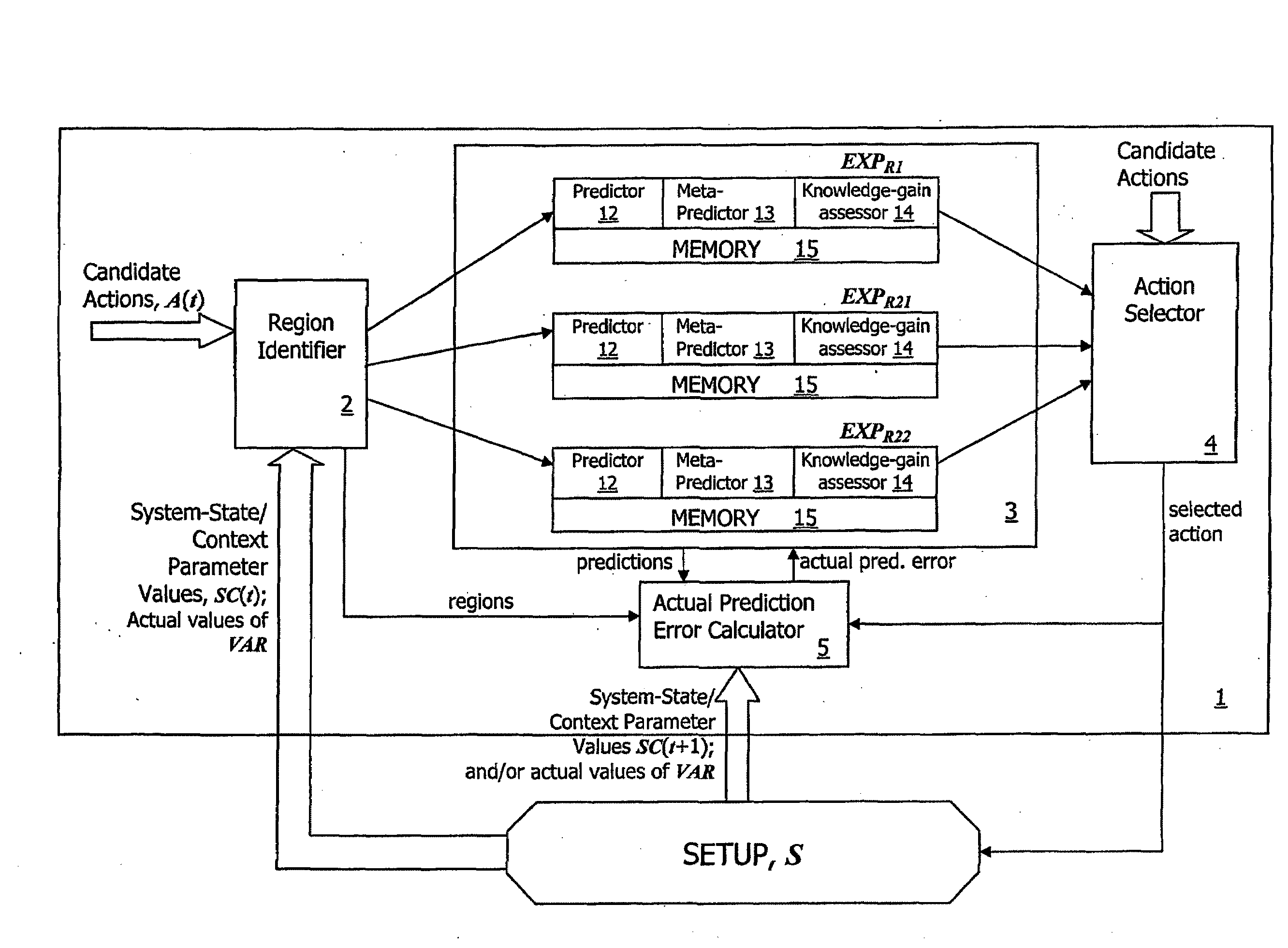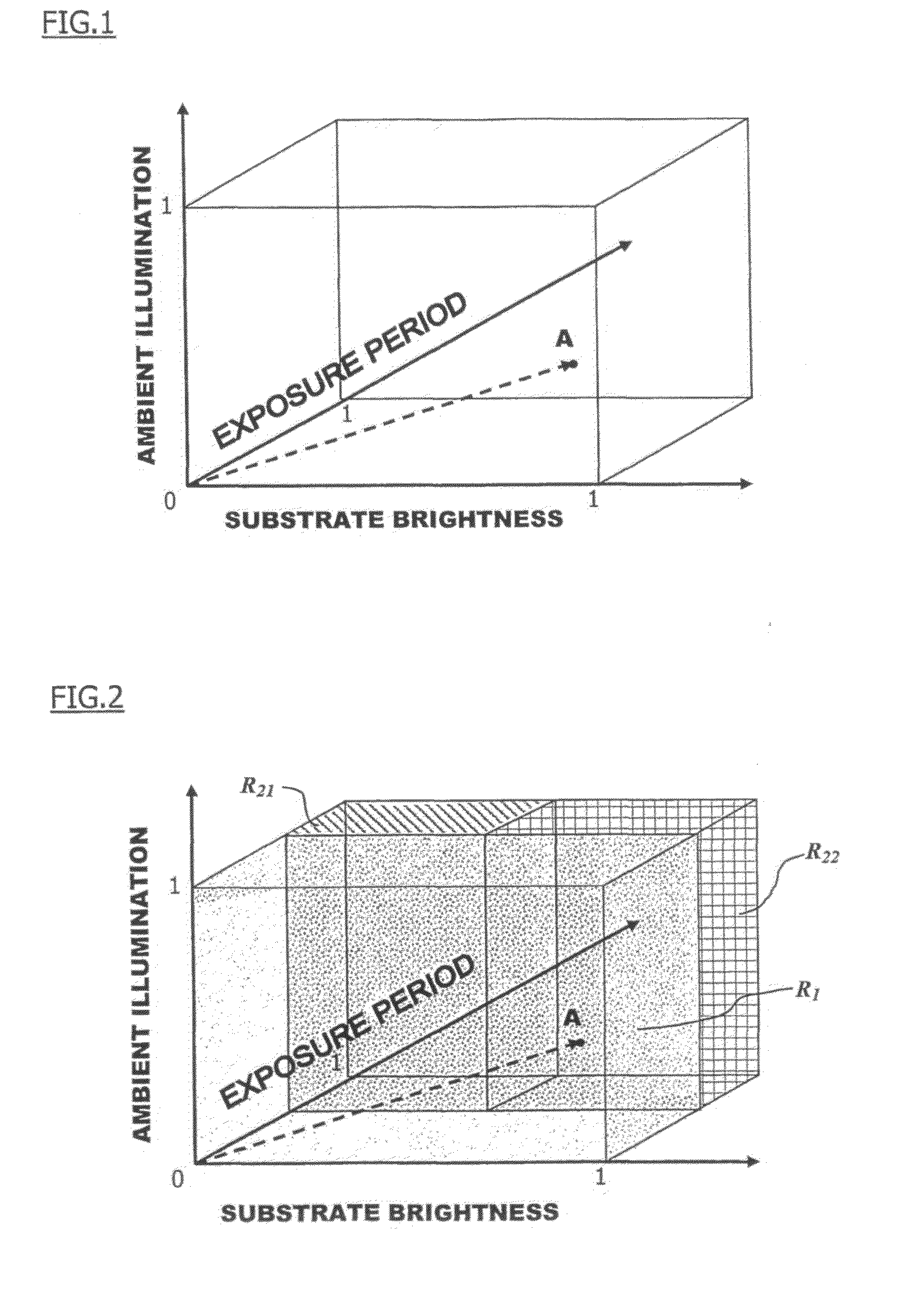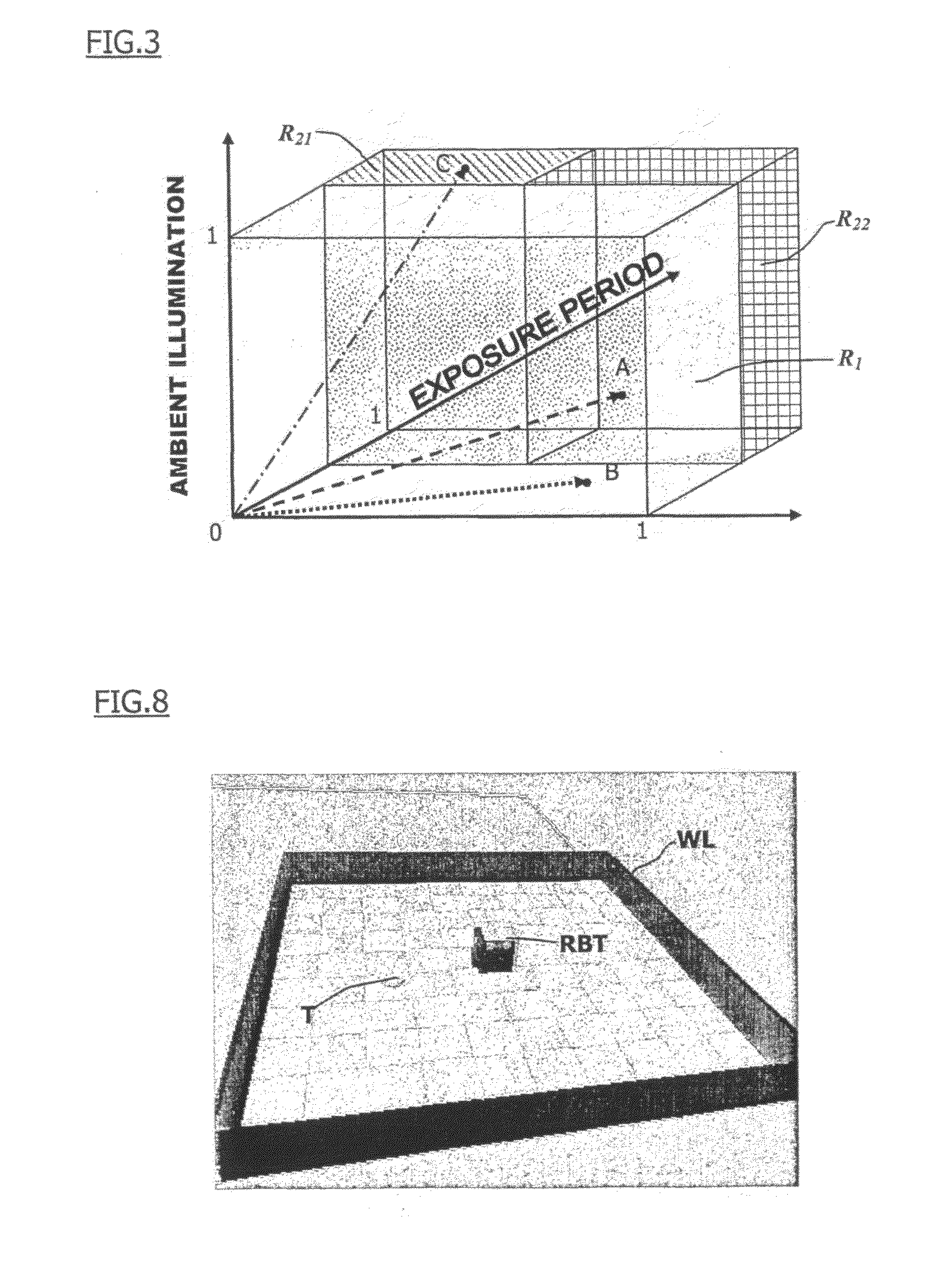Automated Action-Selection System and Method , and Application Thereof to Training Prediction Machines and Driving the Development of Self-Developing Devices
a technology of automatic action selection and action selection, applied in the field of automatic action selection system and method, and the application thereof to training prediction machines and driving the development of self-developing devices, can solve the problems of inability to easily implement continuous system-state/context/action spaces, inability to learn anything useful, and inability to randomly explore sensory-motor state-spaces
- Summary
- Abstract
- Description
- Claims
- Application Information
AI Technical Summary
Benefits of technology
Problems solved by technology
Method used
Image
Examples
example 1
Biological Field
[0161]In this particular example, a human user wishes to find out how a certain organ of an organism reacts when injected with a mixture of chemicals. The mixture of chemicals can be defined by specifying the concentration of each chemical (C1, C2, C3, . . . , Cn) and the reaction of the studied organ can be measured by determining what is the concentration (CC30) of cells of a certain type in that organ thirty minutes after injection of the mixture of chemicals.
[0162]Each trial or action involves injection of chemicals into the organ and a consequent reaction which could entail damage to or destruction of that organ. Time and costs are also involved in performing each trial. Clearly it is desirable to be able to minimize the number of trials that are performed.
[0163]The user can ensure that knowledge regarding the reaction of the organism to chemical mixtures can be acquired in an efficient manner, thereby reducing the number of trials that are required, by making u...
example 2
Agricultural Field
[0177]Next consider an example in which a biotechnology firm is designing a particular species of yeast intended for sale to farmers. Yeast can be cultivated under different conditions, for example, using a greater or lesser quantity of water, fertilising chemicals and pesticides. The quality and quantity of the adult yeast will vary depending on the settings of these parameters as well as based on the agricultural context (for example, the type of soil, amount of sun, etc.). Different farmers may have different priorities: one wishing to use few chemicals whilst still assuring sufficient yield, another wishing to maximise the yield of yeast even if large quantities of chemicals are required.
[0178]The biotechnology firm wishes to study the way in which the amounts of water, fertilising chemicals and pesticides used during cultivation of its yeast affect the final yield, in different agricultural contexts.
[0179]The quantity of water, fertilising chemicals and pestic...
example 3
Field of Industrial Production / Manufacturing
[0190]This example concerns the case of a company manufacturing combustion engines or motors. Different compositions of fuel can be used to power these motors. However, the precise choice of composition will affect the functioning of the motor: some compositions may be cheap but cause the motor to deteriorate, cutting short its lifespan; certain other compositions may extend the lifespan of the engine but at the cost of increased energy consumption. The effect of the fuel composition on the engine's performance / lifespan may be particularly critical in the case of large engines used in factories and the like. It is desirable to know how variation of the fuel composition affects variables such as the lifespan of the engine, the fuel consumption, etc.
[0191]Clearly, tests involving determination of factors such as an engine's lifespan for different compositions of fuel can be extremely costly. Once again, it is desirable to be able to reduce t...
PUM
 Login to View More
Login to View More Abstract
Description
Claims
Application Information
 Login to View More
Login to View More - R&D
- Intellectual Property
- Life Sciences
- Materials
- Tech Scout
- Unparalleled Data Quality
- Higher Quality Content
- 60% Fewer Hallucinations
Browse by: Latest US Patents, China's latest patents, Technical Efficacy Thesaurus, Application Domain, Technology Topic, Popular Technical Reports.
© 2025 PatSnap. All rights reserved.Legal|Privacy policy|Modern Slavery Act Transparency Statement|Sitemap|About US| Contact US: help@patsnap.com



